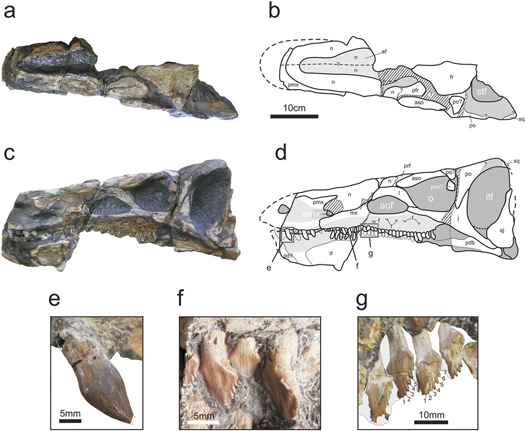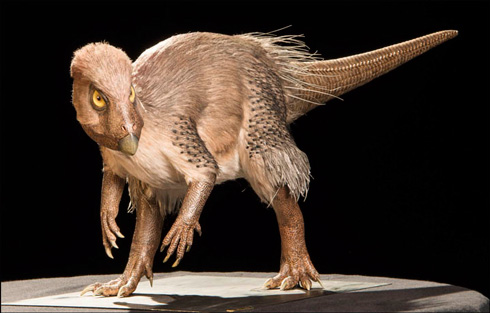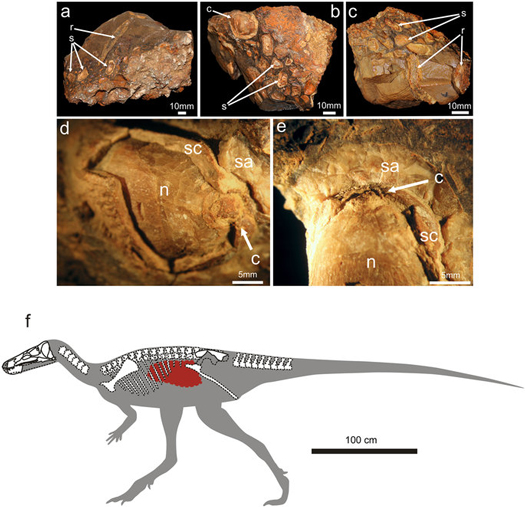Plant-Eating Dinosaurs Probably Played an Important Role in Seed Dispersal
Time to catch up on our reading and first on the list of papers is this fascinating insight into the relationship between plant-eating dinosaurs and seed dispersal. An international team of scientists from Portugal, Spain and Argentina have described a new species of primitive, bird-hipped dinosaur and an assessment of the body cavity led to the discovery of the dinosaur’s last meal. Permineralised seeds, most of which having been identified as coming from cycads (Cycadales), suggest that herbivorous dinosaurs played an important role in seed dispersal, just as many plant-eating mammals do today.
The New Argentinian Dinosaur Isaberrysaura mollensis is Related to Kulindadromeus from Siberia
Picture credit: T. Hubin/RBINS
Plant-eating Dinosaurs
The researchers which include lead author, Leonardo Salgado (CONICET – Universidad Nacional de Río Negro), conducted a phylogenetic analysis and assigned this new dinosaur species to the basal Ornithopoda, suggesting that it is closely related to Kulindadromeus (K. zabaikalicus), fossils of which are known from geologically younger strata found in Siberia. However, this new dinosaur, named Isaberrysaura was much larger, with an estimated body length of approximately six metres.
The Feeding Habits of Herbivorous Dinosaurs
Despite some two-thirds of all the dinosaurs described to date being plant-eaters, there is little direct evidence of the feeding habits of herbivorous dinosaurs that matches the stomach contents preserved within a carcase. Most unaltered gut content that has been found is associated with much later dinosaurs -hadrosaurids and ornithopods. This is the first time that gut contents have been identified in association with the remains of a basal neornithischian.
For models and replicas of ornithischians and other dinosaurs: Prehistoric Animal Models and Dinosaur Figures.
The specimen, representing a single individual, consists of an almost complete skull, vertebrae, part of the left shoulder blade (scapula), along with ribs and elements from the pelvic girdle. It was excavated from the Los Molles Formation (Neuquén Basin, Argentina), from sediments that suggest a coastal-delta environment, the presence of the zone ammonite Sonninia altecostata in the same fossil bed, indicate that Isaberrysaura lived some 170 million years ago (Early Bajocian faunal stage of the Middle Jurassic).
These are the first dinosaur remains found in this geological unit and the one of the oldest dinosaurs known from the Neuquén Basin. In addition, this is the first neornithischian dinosaur known from the Jurassic of South America. The skull and the teeth show some affinity with basal stegosaurids which suggests that both the Thyreophora and neornithischian dinosaurs shared a lot of similar features (potential evidence of convergent evolution amongst plant-eating dinosaurs).
Isaberrysaura mollensis – Views of the Skull and Teeth

The skull in (a) dorsal and left lateral view (c) with corresponding line drawings (b and d). Premaxillary tooth (e) and maxillary teeth (e and f).
Picture credit: Scientific Reports
Why Isaberrysaura?
This month, we have once again been celebrating International Women’s Day (March 8th), it is pleasing to note that the female form of “saurus” has been chosen when it came to naming this new dinosaur, as the genus has been erected to honour Isabel Valdivia Berry, who reported the finding of the holotype material. In the body cavity, the researchers were able to identify a mass of permineralised seeds. These were identified as belonging mostly to the Cycadales group of plants. These tough seeds would have passed through the dinosaur’s gut and would have been deposited in the dung. This fossil discovery suggests a possible and unexpected role of bird-hipped dinosaurs, that of Jurassic seed-dispersal agents.
An Analysis of the Gut Contents of Isaberrysaura
The photograph above shows images of the body cavity showing evidence of the seed fossils.
Some of the fossils show that their fleshy seed-coats are still intact (sc = sarcotesta), this indicates that these seeds were swallowed whole with little or no chewing action in the mouth.
The scientific paper: “A New Primitive Neornithischian Dinosaur from the Jurassic of Patagonia with Gut Contents”, published in the journal “Scientific Reports”.
Visit the Everything Dinosaur website: Everything Dinosaur.








Leave A Comment